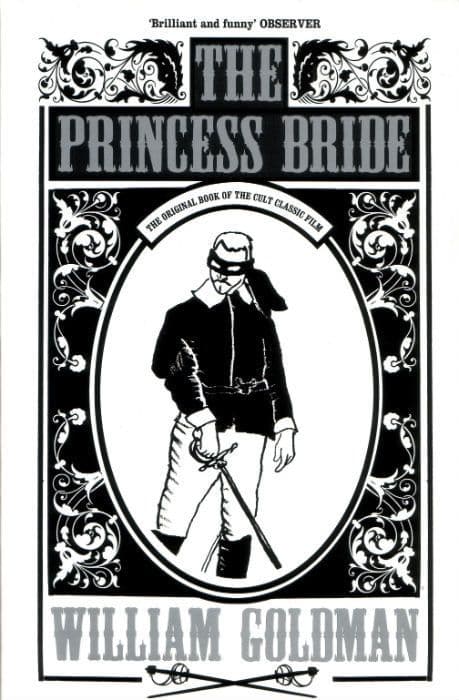
The Princess Bride
by William Goldman
The Princess Bride: S. Morgenstern's Classic Tale of True Love and High Adventure, The "Good Parts" Version is a 1973 novel by writer William Goldman. It is a work of metafiction where the author re-tells his father's version of "the good parts" of a classic adventure novel from author S. Morgenstern, a fictional author that Goldman invents for the book. I have to admit I looked Morgenstern up when I started the book because Goldman makes it very believable that he actually existed and wrote the basis of this story. The book captures the spirit of old adventure novels using this cool metafictional framing, stories with sword fighting, romance, giants, strange lands, and other fun and fantastical things.
This book is framed as a father’s bed time reading of a classic adventure novel. The father leaves out the boring bits and shapes the story to be more fun for his sick son. It has a sense of humor that I haven’t read in a fantasy story before. For example, it talks about an official ranking of the most beautiful women in the world with absolute factual authority, casually discussing how Buttercup keeps moving up in the rankings as she starts taking more care of her appearance, bathing and brushing her hair. It has a character that keeps saying “inconceivable” and the people around him are puzzled by his repeated use of the word. It has bizarre obstacles that the characters encounter like R.O.U.S. (Rodents of Unusual Size) in the fire swamps. It is fun to read.
The book has a great sense of humor and I enjoyed the aesthetic choices. A beautiful village milk maid and a farm boy. A revenge obsessed Spanish fencer who is the son of an expert sword maker. A Turkish giant who grew up fighting challengers across the known world. A kidnapping and a chase by a mysterious masked man up "the Cliffs of Insanity". A game of wits involving a deadly poison. A swash-buckling sword fight between expert fencers with discussions of the fine details of techniques. A journey through the fire swamps and a descent into the snow sand. It felt like it had very intentional design to it, with exotic character backstories, clever humor, and lots of surprises. It felt like classic timeless stories and legends. There were tons of cleverly written twists and turns. It feels like an homage to classic adventure novels and folk legends but with modern entertainment sensibilities.
The metafictional framing of the book emphasizes the feel of ancient folk legends that the book gives off. I actually googled Morgenstern to see if it was based on an old book. I’m going to be honest, I also googled Florin (the fictional setting of the book) to see if that was a real land in medieval times also. I liked how the author would interject and say he was skipping over a huge section discussing the history of this or that or the styles of dress of the time or whatever. It really felt like he was talking about a real old book and author. It is a cool effect. He also plays with the ending and other certain sections of the story which emphasizes how tales and legends can be re-told and re-shaped and interpreted in different ways throughout time for different audiences and for different effects. It also gives him permission to let the father and the son write some of the story and commentate on the story to shape their characters. The metafictional aspect of the book suggests how the audience can interpret and shape stories and reveals the power of fiction and story telling in general.
The book is, of course, the basis of the beloved classic 1987 movie The Princess Bride. I didn’t even know the movie was based on a book until recently. People love the movie, but I haven’t heard many people talk about the book. I think the book holds up extremely well for modern audiences. It has a timeless beauty to it, but also is fun and fast-paced. The book is even funnier than the movie in some ways.
I revisited the movie for the first time since I was a kid after reading the book, and the movie is a classic for a reason. It does a great job adapting the book. It does leave a lot of the backstory and the more meta stuff about S. Morgenstern’s original novel out though, which makes the book worth a read. The movie has some great physical comedy and gags that the book can’t convey. The book has detailed passages about Inigo and Fezzik’s backstories in particular that I really loved reading. The book also has an extremely memorable scene in the snow sand that captured my imagination. The scene in the book was much more dramatic and detailed. It was one of the most memorable parts of the book for me, but I can understand why the movie would have difficulty filming such a scene, of characters drowning and swimming deep in the depths of a quicksand like substance.
Overall, I loved both the book and the movie. I really like the metafictional presentation of the story and the unique mix of swashbuckling adventure and humor. It is a fun tribute to adventure stories and legends.